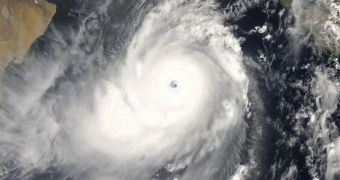The increase in average cyclone intensity that has been observed over the Arabian Sea in the past few years has been linked to sharp increases in pollution levels in the region. A study detailing the connection is published in this week's issue of the esteemed scientific journal Nature.
Climate scientists say that prevailing wind shear patterns are usually enough to stop the development of cyclones, preventing them from turning into major storms. However, the changing climate is shifting these patterns, enabling the formation of increasingly strong storms.
Recent measurements have revealed the existence of massive amounts of aerosols in the air above the Arabian Sea. These minute particles affect regional climate by dimming the amount of sunlight that makes its way to the ocean's surface. Temperature changes influence wind patterns directly.
“We're showing that pollution from human activities as simple as burning wood or driving a vehicle with a diesel engine can change these massive atmospheric phenomena in a significant way,” University of Virginia expert and lead paper author Amato Evan explains.

 14 DAY TRIAL //
14 DAY TRIAL //